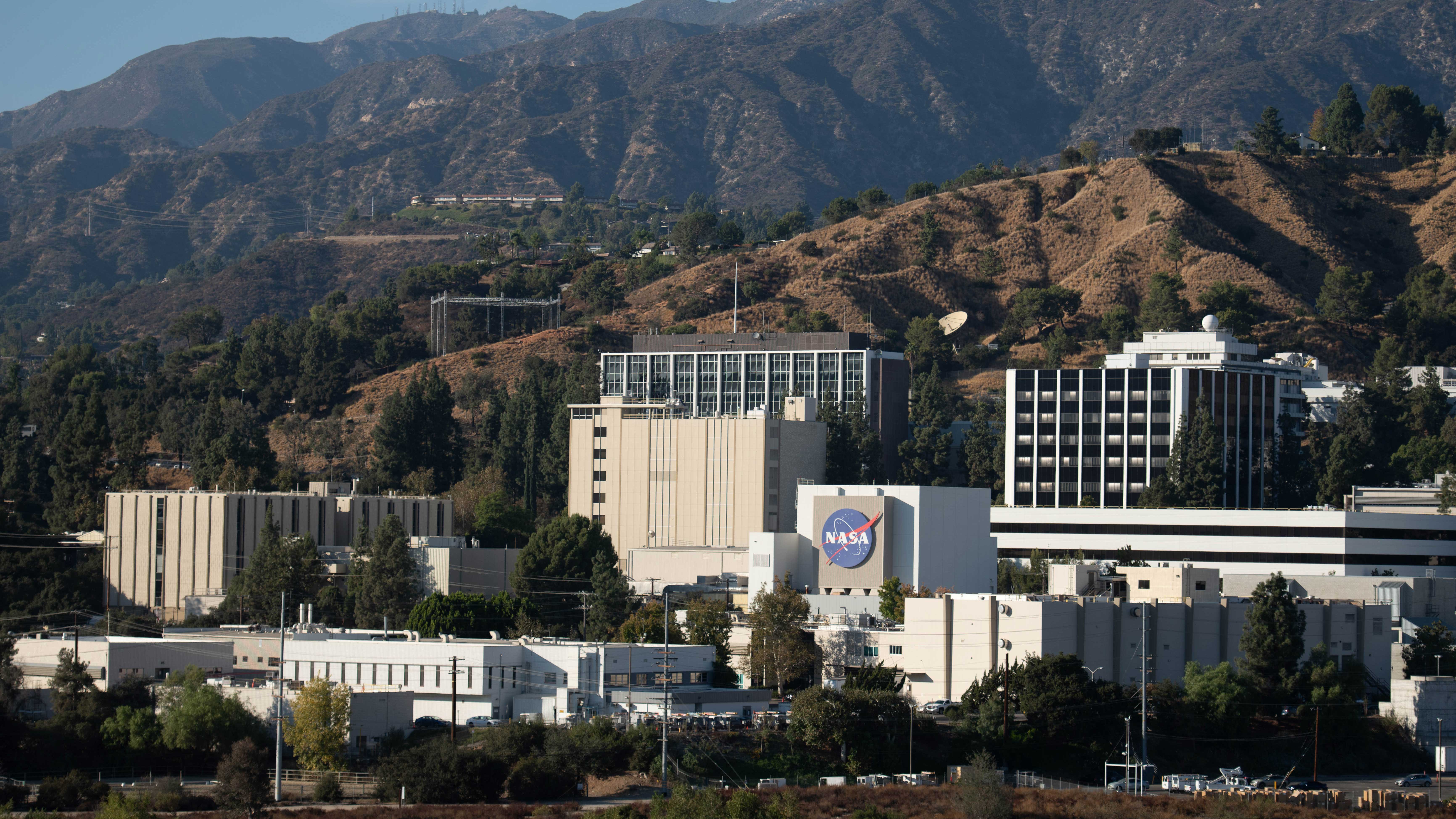
NASA's chief center for robotic planetary exploration is conducting another round of layoffs.
The Jet Propulsion Laboratory (JPL) in Southern California — which manages many of NASA's high-profile robotic missions, such as the Perseverance and Curiosity Mars rovers — announced Tuesday (Nov. 12) that it will lay off about 325 employees, or roughly 5% of its workforce.
"The impacts are occurring across technical, business and support areas of the Laboratory," JPL officials wrote in an update on Tuesday. "These are painful but necessary adjustments that will enable us to adhere to our budget while continuing our important work for NASA and our nation."
Related: Facts and information about NASA's Jet Propulsion Laboratory
JPL, which is federally funded but managed by the California Institute of Technology in Pasadena, also conducted a round of layoffs in February. Those cuts affected about 8% of JPL's workforce — 530 employees and 40 contractors.
The February layoffs were spurred, in part, by a reduction in funding this fiscal year for Mars sample return (MSR), a bold campaign to get material collected by Perseverance back to Earth in the 2030s.
The entire MSR architecture is now under review, as the original plan was deemed too expensive; last year, an independent review board pegged its price tag at $8 billion to $11 billion.
Get the Space.com Newsletter
Breaking space news, the latest updates on rocket launches, skywatching events and more!
JPL officials did not mention MSR when explaining this second round of layoffs, instead citing funding shortfalls more generally.
"With lower budgets and based on the forecasted work ahead, we had to tighten our belts across the board, and you will see that reflected in the layoff impacts," JPL Director Laurie Leshin said in a memo to employees that the lab published with Tuesday's layoff announcement.

Leshin said that the results of last week's presidential election did not play a role in the layoffs, which go into effect on Wednesday (Nov. 13). She stressed that "this action would be happening regardless of the recent election outcome."
Leshin also expressed hope that there would be no need for further layoffs for the foreseeable future.
"After this action, we will be at about 5,500 JPL regular employees," she wrote. "I believe this is a stable, supportable staffing level moving forward. While we can never be 100% certain of the future budget, we will be well positioned for the work ahead."
Join our Space Forums to keep talking space on the latest missions, night sky and more! And if you have a news tip, correction or comment, let us know at: community@space.com.

Michael Wall is a Senior Space Writer with Space.com and joined the team in 2010. He primarily covers exoplanets, spaceflight and military space, but has been known to dabble in the space art beat. His book about the search for alien life, "Out There," was published on Nov. 13, 2018. Before becoming a science writer, Michael worked as a herpetologist and wildlife biologist. He has a Ph.D. in evolutionary biology from the University of Sydney, Australia, a bachelor's degree from the University of Arizona, and a graduate certificate in science writing from the University of California, Santa Cruz. To find out what his latest project is, you can follow Michael on Twitter.
-
BT2024 And NASA stabs itself in the back again as opposed to letting go of the lowest priority projects/missions/facilities entirely.Reply -
losgatos_dale ReplyBT2024 said:And NASA stabs itself in the back again as opposed to letting go of the lowest priority projects/missions/facilities entirely.
Give us a break. This is a Cal Tech decision, they are the contractor that manages operation of the JPL for NASA. They also manage projects for NASA and other customers. They still have 5500 employees, and are working like hell to keep them. -
Unclear Engineer "conducting its second round of layoffs in 2024, reducing its workforce by another 5%"Reply
doesn't sound consistent with
"They still have 5500 employees, and are working like hell to keep them."
JPL is the victim of Congressional budgeting of NASA. Maybe JPL is trying to keep its staff together, but if the customer(s) don't have the cash to buy its products, then they can't make the products, can't get the income, and can't pay their staff that makes those products.
NASA has to play the game in both directions. These projects take long time periods - far longer than annual budget cycles or even administrations with their changing priorities. And the rate of progress is often limited by budget. So, NASA needs to constantly decide if it needs to cancel projects or try to keep them going "on the back burner" until Congress decides to change its priorities and/or budget to support them again. Plus, sometimes Congress explicitly directs NASA to prioritize some project or stop some project.
It is not feasible to start-stop- restart projects that require specialized knowledge and skills. The necessary people leave and are not necessarily going to come back to a company that laid them off. Restarting a "killed" project is not much different from starting a new project with new staff. Unless the contractor can find some way to keep the suddenly unemployed staff on-payroll by assigning them new tasks.









